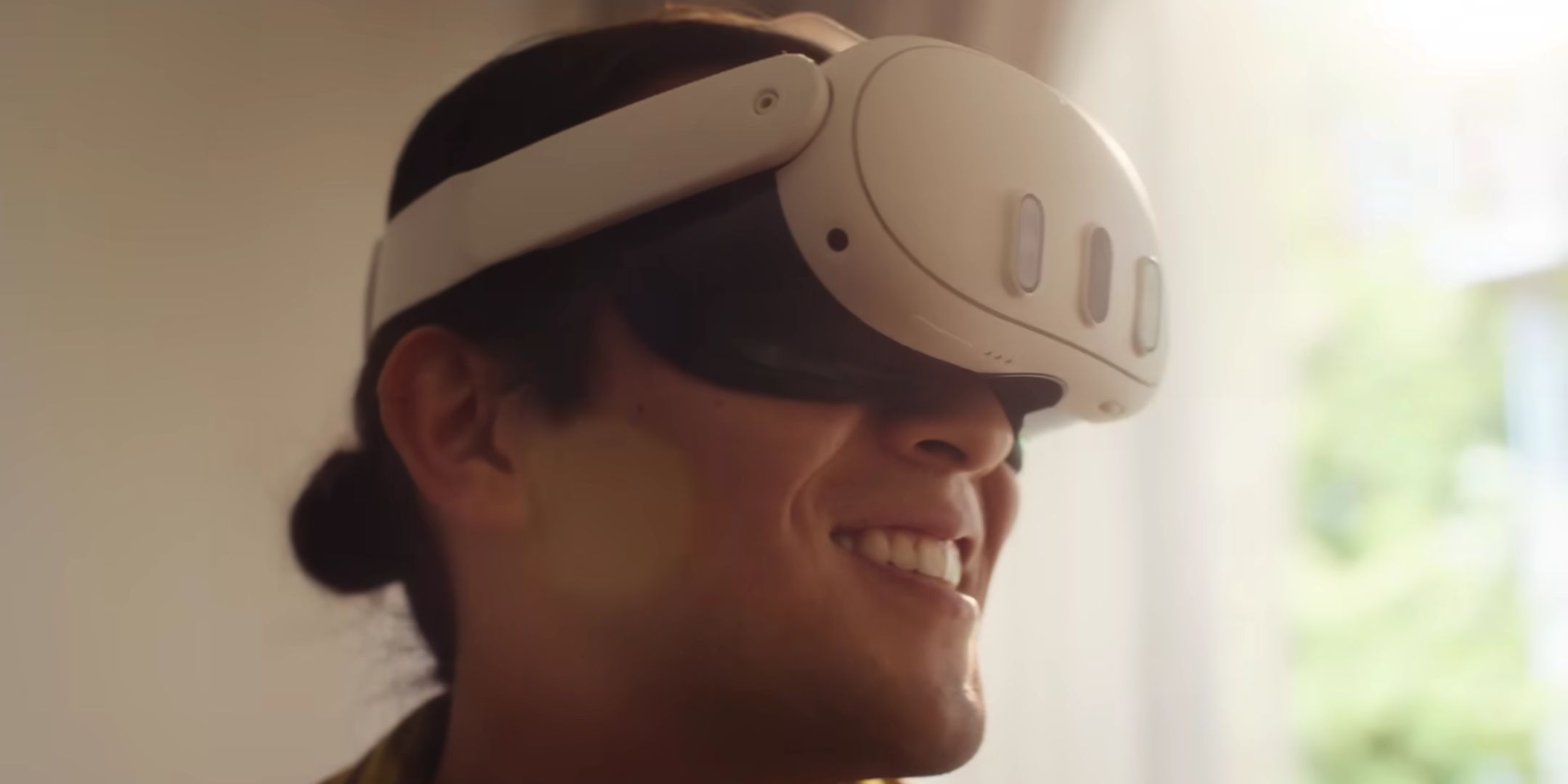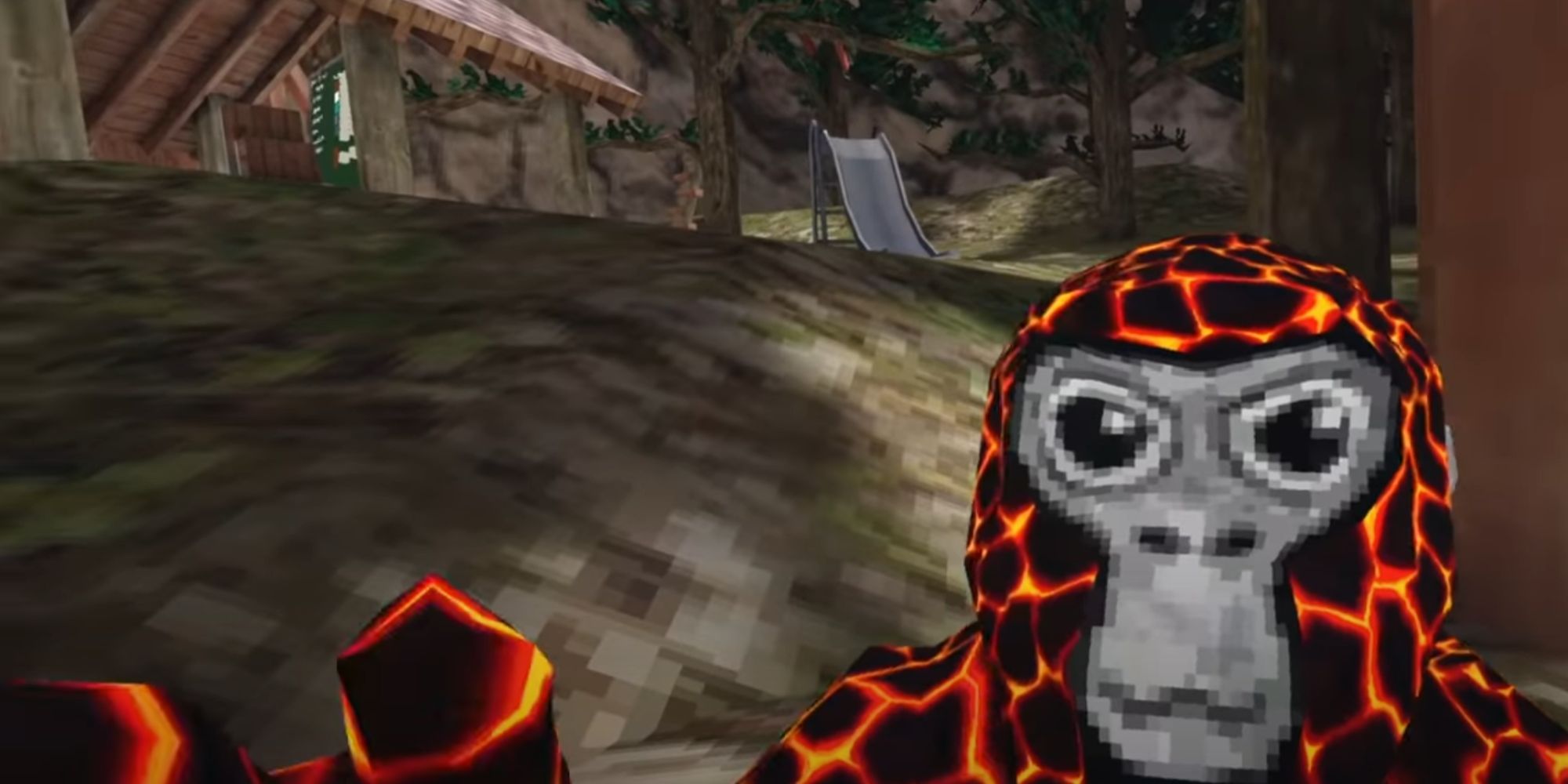Two minutes into my conversation with Gorilla Tag creator Kerestell Smith, I completely understood why his game has become such a phenomenon. The virtual reality hangout game that invites you to “reject humanity, become gorilla” hosts a million players per day across Quest and Steam. That’s practically Counter-Strike 2 numbers; an unfathomably sized audience for VR. Despite its modest (yet memeable) aesthetic and simplistic sandbox gameplay, the free-to-play game celebrated 12 million lifetime players and $100 million in revenue this summer. And it has shown no signs of slowing either.
Smith, known as Lemming to his fans, and his team at Another Axiom Inc. have managed to crack the code and attract the massive audience that every VR developer dreams about, and after meeting him at PAX West earlier this year, I realized pretty quickly how he did it: he just gets what makes VR cool.
The Axioms Of Successful VR Game
“Something that we’ve been very careful about is that sense of authenticity,” he tells me as we tuck into a dark corner of the esports lounge at Seattle’s GameWorks. The arcade is hosting a meet-up for the game, and when I arrive I find Lemming surrounded by one hundred excited fans, all wearing banana hats. “You want to be able to put yourself into it because people are going to connect with that. If you just kind of put in something that you feel like eh, maybe people will like, I think people feel that too.”
Lemming was inspired to make Gorilla Tag following his pro career as a competitive Echo Arena player. He immediately connected with its zero-g gameplay, recognizing how visceral and immersive VR can be when it’s done right.
“That game has such a strong experience of what it would be like to be in zero gravity,” he explains. “If you just close your eyes and imagine what it would be like to grab the wall and push off of it and float away, and then see your legs floating in front of you as you’re drifting backwards – when you’re playing that game, that’s the experience you have from top to bottom. It feels exactly like what you imagine it would feel like. That feeling is so intense. You just want to feel that more.”
That sense of authenticity is exactly what he wanted to capture with Gorilla Tag.
“If it’s a disconnecting experience, then that’s something where the next time you think ‘Should I put the headset on?’ You’re thinking maybe I don’t feel like it. But when the world is built in a way that makes you feel like you want to be in it, that pull is very strong,” he says.

Related
They Need To Create A VR Headset That Lets Me Eat So I Don’t Have To Face Every Day
One step closer to leaving the awful real world behind.
For Gorilla Tag’s 12 million players, that pull is strong enough to overcome the common complaints and criticisms of VR. “A lot of the discussions around VR are about how some parts might be a little uncomfortable, or you have to worry about if it’s charged, if the headset’s too tight, and maybe the visuals aren’t perfect. I strongly feel like those are the things that you notice if the experience is not compelling enough.”
“If it’s a disconnecting experience, then that’s something where the next time you think ‘Should I put the headset on?’ You’re thinking maybe I don’t feel like it. But when the world is built in a way that makes you feel like you
want
to be in it, that pull is very strong,”
In creating Gorilla Tag, Lemming discovered how tough it is to find the right balance. “It’s a really strong feeling, but it’s easy to break,” he explains.
VR still has a lot of physical limitations that clever developers find ways to work around. You can’t move freely through space, you can’t always interact with physical objects. When you use your gorilla arms to push against the ground, which is how you move around the world in Gorilla Tag, you can’t actually feel the earth beneath your hairy palms. But Lemming is able to conjure up an illusion that the world around you is real regardless, and that’s a big achievement.
Echo Arena Was A Big Inspiration For Gorilla Tag
Inspired by his experience in Echo Arena, Lemming discovered how to turn something potentially immersion-breaking into one of the game’s greatest strengths
“What’s so cool about hand-based movement is that when you push off with your hand, you get pushed back,” he says. “All of a sudden the relationship isn’t one-dimensional. I’m not just flailing in the world. I’m pushing on the world and the world pushes back on me, and that creates such a strong relationship with your environment.” Lemming believes the headset and the visuals are only one part of what creates a visceral VR experience. “It’s the part where you’re able to interact with your hands and feel the environment, that is what really places you in the world.”
Making something that could only exist in VR which takes advantage of the medium’s greatest strengths, was both Lemming’s inspiration, and the source of Gorilla Tag’s enormous success. “I’ve tried to really pay attention to that as we’re building stuff. You have to give players a reason to put the headset on,” Lemming explains. “That feeling of wanting to be in the world, I think that’s the key.”
This physical connection is just one part of the immersion formula. Lemming explains that creating an internally consistent world, one that follows a set of rules the player can intuit and exist in without getting bogged down or distracted by control schemes and menus, is the other half of the equation. “I need to learn how to interact with this world, but once I do I actually don’t need to suspend my disbelief anymore,” he explains. “That suspension of disbelief comes from things that violate that world. When something appears out of nowhere, or you hit a loading screen, or you teleport somewhere – all these things that take you out of the experience and remind you that you’re playing a video game – if you clear out all of those things as much as possible, now you have the experience of just, ‘I’m in this other place.’”
Finally, Lemming’s third axiom of immersion is the social aspect. He believes a true virtual reality requires a shared human experience where you can interact with other people in that environment. Sharing the space is what’s most important. It’s one thing to be in a video call or Discord channel with others where there’s an inherent distance between you that creates a subconscious disconnect. “But if you feel like you’re in this real place and other people are there too, it’s so cool,” Lemming says. “There’s nothing else like it.” Using VR to connect with other people is what Lemming considers the technology’s biggest strength and most important use. “I just don’t see a way for VR not to succeed in the long run,” he says. “That experience is so valuable on an interpersonal level. We need that special connection, and VR can provide that in a way that no other technology can.”
Focusing on these core principles is what has made Gorilla Tag one of the most successful VR games ever. It’s a true virtual reality space where people go to relax and socialize. It’s exactly the kind of metaverse that big tech dreams of, and yet this goofball gorilla game is what actually managed to crack the code. I asked Lemming why he thinks this is, and he tells me it’s largely a consequence of his inability to conceive of a bigger picture.
“I think there’s a lot of people that have these big grand ideas, they have a vision for the future. I struggle with that a lot,” he explains. “I feel like what I’ve been able to do well is pay attention to the work that’s been done and see what I find valuable about these different experiences and what I’m connecting with. We’re approaching things not from a ‘where are we trying to get to’ perspective’. It’s just being very clear-minded about what is working right now. What are the experiences we’re connecting with?? How do we want to expand on those things?”
The studio is bringing those same values into its next game, Orion Drift, a sci-fi VR game that leans even more into the style and aesthetic of Echo Arena, upping the size of the social lobbies to 200 players. Lemming likens the experience to being at a convention. “You’re still going to have this focus on interpersonal interactions with small groups of people, but doing it in the context of this larger space adds something to it. You can be playing in a 3v3 match and hear another match going on next to you. There’s a sense of being part of something larger.”
“I don’t feel like we created something with Gorilla Tag, I feel like we found something that was incredibly valuable and this is the sort of thing that if you build on will be successful because of how strongly people connect with it.”
With Orion Drift, the team hopes to create seamless social spaces where you can play a match and then walk over and spectate another one, or meet up with different groups of people and naturally move through different groups and social encounters. “Those are the experiences that you only get in real life that haven’t really been available in games in the same way.”
Even with so much success already, Lemming looks at Gorilla Tag as just the foundation of what he hopes VR will become. “You hear about movies like Casablanca or Gone With the Wind or Pulp Fiction and people say they’re pretty good but they’re all so full of tropes. But that’s because they created them. That’s the kind of thing I hope one day Gorilla Tag is kind of seen as.”

Reject Humanity.
Run, climb, and jump in VR using a unique locomotion method that only needs the movement of your hands and arms. No buttons, no sticks, no teleportation. Push off of surfaces to jump and squeeze them with both hands to climb.
There are four different game modes – From simple Tag, for up to 3 players, or infection mode, with 4 or more. The Hunt game mode gives you a unique personal target to chase down. Paintbrawl is a team vs. team paintball battle using slingshots.
Run from the other gorillas, or outmaneuver the survivors to catch them. Parkour up trees and cliff faces to evade and chase monke down. Hang out in a virtual jungle with randos or group up in a private room with friends to hang out and play. The stakes are low, so feel free to just chat or make up your own games. The movement is easy to learn, and hard to master. Crossplay with the PC versions of the game, so play with anyone on any platform.
There are six different levels to explore. Each with their own topography that form routes and obstacles to play on.
Visit our store in the City, with a rotating inventory of items to buy, play with, and wear to express your true monke.
Become Gorilla.















Leave a Reply